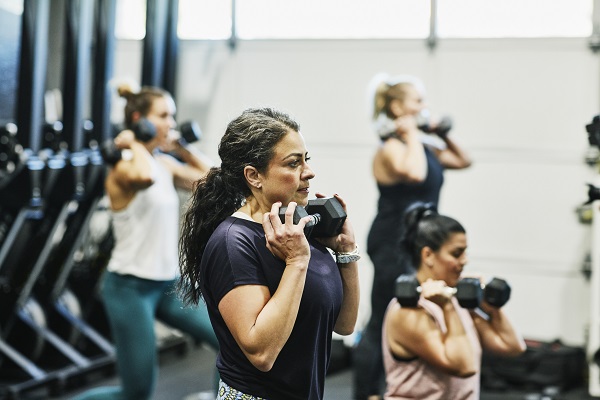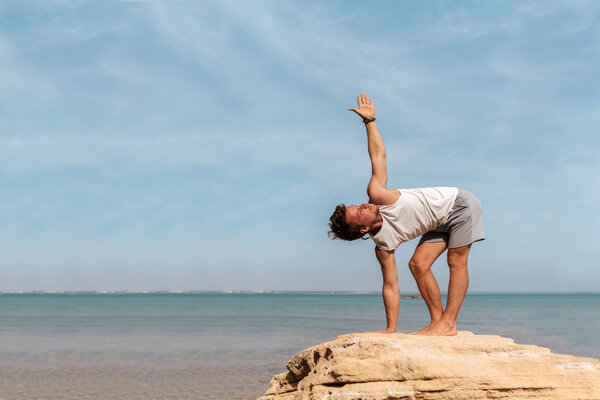-
The rise of cold plunge pools, dead hangs and fasting trends might leave you thinking that good health comes with a side of discomfort. Are the best things for us, the hardest to achieve? Take running – it’s heralded by some as the ultimate cardio, muscle-builder, and the key to weight loss. But if you’re new to running, are older, or have a health condition, the benefits can feel unobtainable. Fortunately, there is a gentle yet effective way to achieve your health goals: walking. We discuss the power of walking for your health with Medibank Group Medical Officer and GP Dr Shona Sundaraj, how it compares to running, and how to maximise the benefits.
Health benefits of walking
There’s no denying the power of a good walk. Walking is associated with the decrease of risk and severity for cardiovascular disease (an umbrella term that includes heart and blood vessel diseases) and cerebrovascular disease (including stroke and other disorders of the blood vessels supplying the brain or its covering membranes). It can also help to reduce the risk of type 2 diabetes, and can help prevent decline in brain function, such as in conditions like dementia. Walking has even been identified as a factor in living longer.
Dr Sundaraj also highlights the positive effect walking can have on mental health, particularly when walking outside. “Getting out in the fresh air and sunshine has really amazing effects on our mental health. We know that exposure to natural light and fresh air brings out the endorphins in our body as we're exercising.”
READ MORE: 7 health benefits of walking
Walking vs. running
Running might be associated more with cardio, but cardio (cardiovascular exercise) includes any activity that increases your heart rate and breathing, sweating and overall blood flow – including walking.
And whilst it’s true that running will likely get you to a level of cardiovascular fitness faster, it can be taxing on the body for some.
“If you have some joint pain, it might not be the best thing for you to be starting up a running program,” says Dr Sundaraj. Instead, she suggests walking on even terrain and avoiding too many hills. Walking allows you to build up strength and speed slowly and consistently.
Another health benefit of running is that it can burn kilojoules, either to help maintain a healthy weight or for weight loss. When comparing the health benefits of walking and running, Dr Sundaraj’s key takeaway was the importance of consistency.
“The difference between walking for weight loss and running for weight loss… It's easier to get those steps up while you're walking, so you're more likely to stick to it and not get disheartened,” she explains.
She also highlighted how running can impact your hunger, saying “Whilst running can be very helpful for weight loss, it can also drive appetite, so there needs to be a balance between nutrition and how people refuel after exercise.” If sustainable weight loss is the goal, high intensity exercise doesn’t always equal better results.
Running regularly can also strengthen muscles. But guess what? So can walking. As you walk, you carry your own weight, helping to tone your legs and abs. Gradually building muscle helps shift the pressure on your joints as your muscles do the heavy lifting.
If you love running, there are undeniable health benefits to enjoy. But for those of us who don’t – or can’t – walking is an excellent way to achieve similar benefits.
Can walking be as good as a run?


parkrun towards rewards
You can now earn 500 Live Better rewards points when participating in 1 or more parkrun events in a month. Open to eligible members with Live Better rewards. Register for parkrun and link your Medibank membership to your parkrun account to start earning, and don't forget to scan your linked parkrun barcode ID at the finish line.*
-
How to walk properly
Whether you’re considering increasing your step count, starting a post-injury exercise program, or looking for ways to incorporate gentle exercise to support a health condition, there are a few things to consider.
Consult your GP
Dr Sundaraj advises for anyone returning to exercise post-surgery, or who have concerns about exercising with a health condition, to consult their GP before getting started.
Wear the correct footwear
Leave the slides at home when walking for exercise. Opt for comfortable shoes, such as runners with appropriate heel and arch support. Developing blisters is often part and parcel of wearing new shoes or increased time on your feet so knowing how to treat them is important.
Walking terrain
Walking through the bush or on the beach can be a great way to exercise but Dr Sundaraj says considering the fall risk is important.
“If there's a level of disability or a balance issue – whether from a neurological condition or people in an older age group – then considering the terrain that people are walking on is important, such as walking around the walking track at the local oval as opposed to going on a trail walk to start off with.”
Listen to your body
Dr Sundaraj explains whilst feeling tired, hungry, and a little sore after a long walk is often part of the process, you shouldn’t be deterred. Working a stretch or cool-down into your routine can help with muscle stiffness and injury.
READ MORE: Tips on how to walk 10,000 steps a day
How fast should you walk
Most studies that look at the benefits of walking and exercise are based on moderate-intensity exercise. In terms of walking, that means a brisk walk where you can still talk but your breathing makes it difficult to sing.
For most people, it’s about 100 steps per minute, but it can vary from person-to-person depending on factors like fitness and mobility.
Dr Sundaraj doesn’t want you to get caught up with perfect numbers, though.
“I don't think that we need to be necessarily prescriptive about the length of a walk or the speed of a walk. Everyone's going to have a different baseline when they start. What matters is that you're actually doing it.”
-
How to choose and fit the right sports bra
Professor Deirdre McGhee’s expert advice on how to find your perfect fit.
-
Why more women are embracing strength training (and why you should too)
Strength training for women has many physical and mental health benefits, from strengthening bones to burning calories. Learn what they are, and how to get started.
-
Yoga and Pilates are for men too
Yoga and Pilates are for men, too. Pilates instructor Anthony Lett shares the health benefits of stretching for men.
-
7 ways walking boosts your health
Walking is a fantastic way to improve your mental and physical health, including your risk of heart disease and type 2 diabetes. Read more about the benefits, and how to get started.
-
How to walk 10,000 steps
How long does it really take to walk 10,000 steps? It may not be as hard as you think!
-
Everything you need to know about parkrun
Been wondering what a parkrun looks like? Where do you go? What do you do? How do you sign up? Find out here.
Things you should know
* Must be 16 years or over to register for Medibank Live Better rewards. Some program partners and earning activities require a person to be at least 18 years of age to be eligible to earn and/or redeem a reward. Must be a Medibank member with Hospital cover, Extras cover, or Hospital and Extras cover, be up-to-date with premium payments and have signed up to Medibank Live Better rewards with My Medibank to earn Live Better rewards points and to redeem rewards. Excludes Overseas Student Health Cover (OSHC), Ambulance only cover, ahm covers and other selected covers. Live Better Management Pty Ltd, ACN 003 457 289 has entered into commercial arrangements with Medibank Live Better rewards program partners and may receive commissions. Additional terms and conditions may apply to the redemption of a reward depending on the type of reward chosen. Points earning activities and rewards are subject to change and may be subject to availability. Wherever possible, we will give you notice of these changes. See full Medibank Live Better terms.





